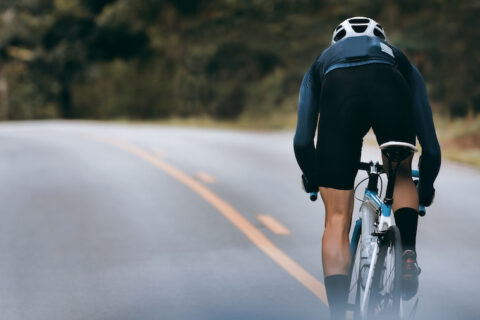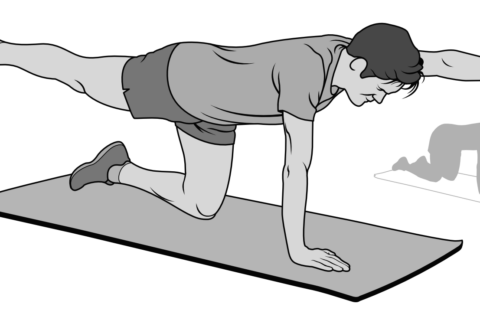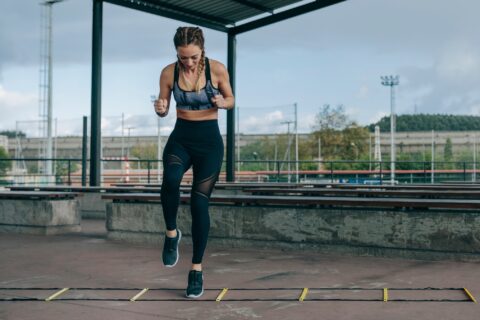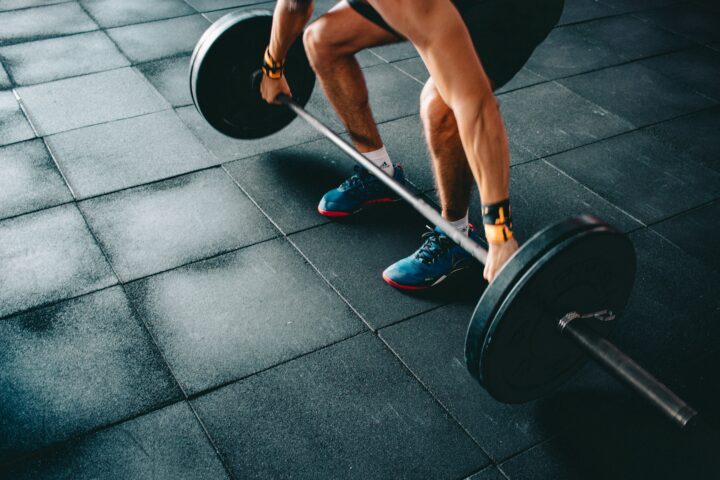Start our six-week, off-season strength training program with this simple warm-up and activation routine that’s designed to get you ready to move and lift.
Video Transcript
Ryan Kohler 00:05
Hi, I’m Ryan Kohler, I’m a coach and exercise physiologist, and I’d like to welcome you to my six-week strength training program. In these six weeks, what we’re going to do is focus on some lower body and upper body workouts that will prioritize your overall strength development, and just work on good overall athletic movement patterns.
Ryan Kohler 00:22
You’ll have a bit of variety over these six weeks, what I would suggest is that if you get to an exercise that you’re not very familiar with, stick with that for a while. But, if it works out and you’re familiar enough, and you feel like you’re progressing well, move on with the added variety that it will have. Also, if you’re unsure of exercises, feel any pain, or anything like that that would throw up a red flag, search out a certified strength and conditioning professional or a certified weightlifting coach, as they can really help you move with the best quality to prevent injury and get your best performance.
Begin with 5-10 minutes of aerobic activity
Ryan Kohler 00:54
We’ll get started here with five to 10 minutes of general aerobic activity. This can be cycling, running, it can be a step master, or anything like that, as long as we have something consistent to elevate our heart rate and prepare us for the movements to come.
Leg swings
Ryan Kohler 01:09
Next we’ll go with leg swings. These generally go about 30 seconds on each side, and progressively increase the speed of the leg swing as I go through.
Walking toe touch
Ryan Kohler 01:19
Next, we’ll go into a walking toe touch; we’ll do about eight to 10 reps per side. I usually take that down and back where I’ll swing one leg forward, and then reach across and touch it with the opposite hand. After that, we’ll do the same movement with that walking toe touch except we’re going to add a quadricep stretch in there. When that leg comes forward, and we touch it, we swing it back, and catch it in the same side hand. Then using the glute to fire, we drive that knee back. The thing to avoid with this is grabbing with that same side hand and yanking back.
High/low lateral hurdle
Ryan Kohler 01:55
Next, we’ll do a high/low lateral hurdle. This is imagining we’re stepping over a hurdle and then sliding ourselves under another hurdle. To go over, we’re going to open the hip up and step over, and then we bring the other leg to follow. After that, we slide under the hurdle by going into a lateral lunge, dropping ourselves down, and then coming back up the other side. We will repeat that about five to six times and then come back the other direction.
Lunge stretch
Ryan Kohler 02:22
Next, we’ll go into a lunge stretch. We’ll take a big step forward with one foot, take our opposite hand, and place it on the outside on the floor for support. Then we’ll just let ourselves sink into that position. We’ll come back up after a second and then move into doing the other leg, do about five to six reps of that walking down, turn around and come on back.
If you want to progress your walking lunge stretch, you can bring it into more of a yoga-esque type of pose by reaching with one side or the other to add in that rotational component as well.
Lunge with a rotation
Ryan Kohler 02:54
Next, we’re going to go into a lunge with rotation. I’m going to use a soccer ball here, if you have a medicine ball or anything else that you can hold, you can just use that. What we’ll do is step into a small lunge position here, and then drop our hips straight down to let that knee stay behind the toes. From that position, we’re going to rotate to one side, and we’ll look behind us. Now we’ll come back, look to the other side, come up, step forward into that lunge position again, repeat five or six times, turn around and come on back.
Double-leg hop
Ryan Kohler 03:24
After that, we’re gonna go into a double-leg hop. Now these are not maximal jumps. Think about these as like 75/85% of max. What we’ll do is start in a nice athletic position, we’ll drop down and we’re just going to jump forward a couple of feet. Then we’ll land nice and soft. The key here, land with your legs nice and straight, try not to let those knees cave in. This is again, why we don’t want to do it maximally, we want to focus on good form with these. Do about five or six total, and then come back the other direction.
Lateral resistant steps
Ryan Kohler 03:51
Next we’ll take a band and we’ll put it around our ankles, and what we’ll do is then step laterally in slow controlled steps where we maintain resistance on the band the entire time. We’ll do this about 15 to 20 steps to one side and then 15 to 20 steps on the other side.
Double-leg hip bridge
Ryan Kohler 04:09
Next, we’ll do a double- or single-leg hip bridge, do double if you’re less familiar with this exercise, and if you’re more accustomed to it, you can do this as a single-leg variation. We’ll lie on the ground with our knees bent and pointing up toward the ceiling, we will drive our hips up toward the ceiling using our glutes, and then lower ourselves back down. We’ll do 10 to 15 reps of these, and I normally do two sets.
Bodyweight squats
Ryan Kohler 04:35
Next we’ll bring that band into position. We’re going to wrap that around our legs just above the knees here, and then what we’ll do is just normal bodyweight squats. As we go down in those squats, we drive those knees out a little bit to a nice stable position and then we come back up, do about 10 to 15 reps, and again about two sets.
Assorted upper body movements
Ryan Kohler 04:54
Finally, we’ll finish up with some assorted upper body movements that will include some arm circles, some internal and external rotation, and then some shoulder flexion just to complete that process. I’ll do about five to 10 reps of each, and usually about two sets.
That’ll finish up our warm-up. This usually takes me about eight to 12 minutes to get done, and then I feel ready to go after that. This will be something that you should do at the beginning of every strength session. Because it’s a warm-up, there’s a lot of flexibility that can be built in. Take these exercises as a starting point, but also feel free to add your own flair to it if you like a different movement or you find something unique that works for you, you can change it out because the goal here is just to increase our heart rate, increase respiration, move through our range of motion, and just prepare bodies for the lifting to come.



